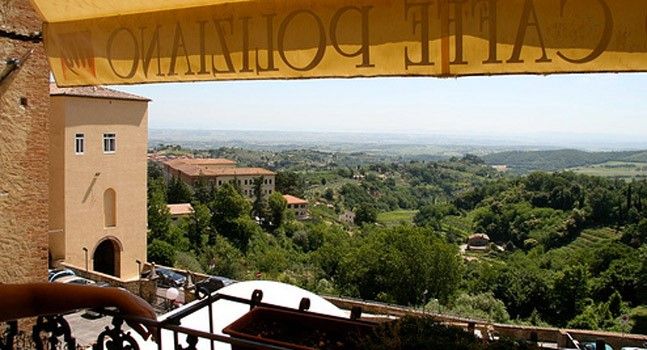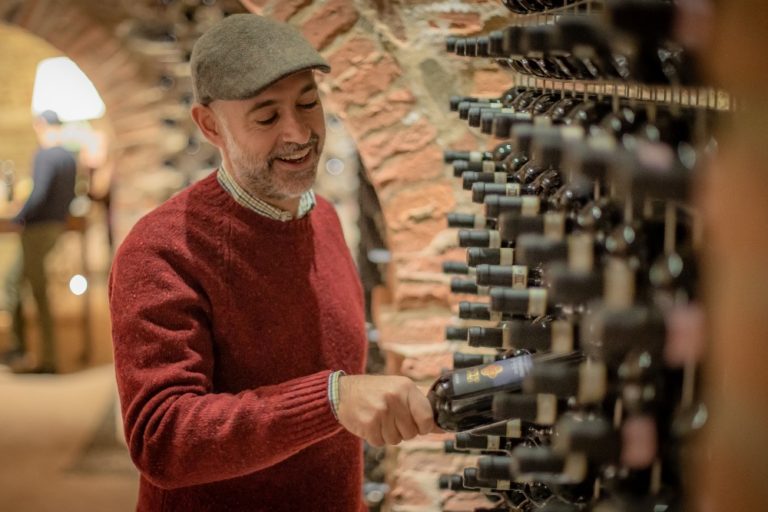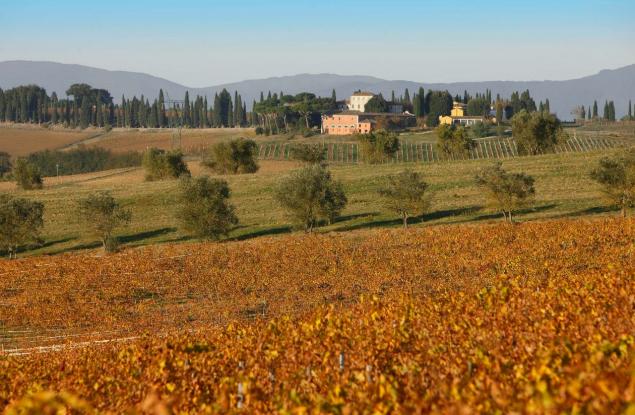La Dogana at the interstices of history, nature and local traditions
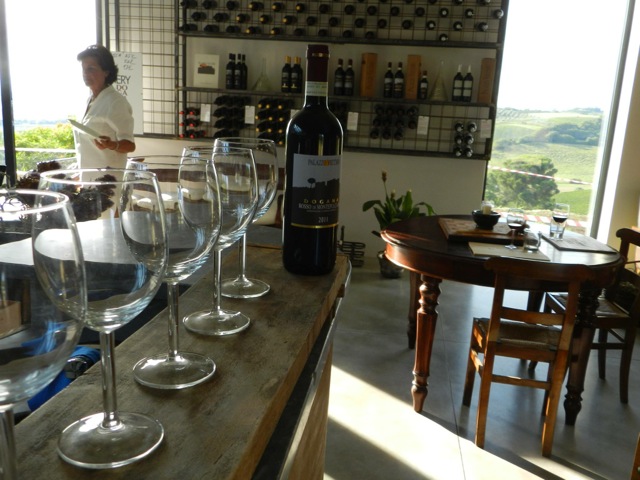
When I met Oonagh Stransky and Maria Luisa Sbernadori on a beautiful and cold January morning, the sign for La Dogana Enoteca stood proudly at the intersection just outisde Valiano. I arrived there the same way a pilgrim traveling along the Via Lauretana might have, in need of repose after a long journey. Whether you reach La Dogana after a metaphorical journey or a physical one, it doesn’t really matter: this space, its painting-like view over the Valdichiana, the serene atmosphere and the convivial spirit will make everyone feel right at home. Even if it was my first time there, it felt familiar. Nor did I feel like a tourist. I was a welcome guest.

La Dogana, which belongs to Palazzo Vecchio, an artisanal winery that was founded in the 1950s, is a unique space that is strategically situated halfway between Montepulciano and Cortona, on the border of Montepulciano, in the hamlet of historically important Valiano. The La Dogana managers know this and hope to replicate its role in a contemporary setting. They want to offer visitors a place where they can sit and enjoy the view, a good book, a platter of charcuterie, and a glass of wine. Its position makes it fascinating: its is adjacent to the famed Via Lauretana that crosses Valiano and the Valdichiana on one side, and on the other side it marks the beginning of Via Terrarossa, a dirt road which leads to mother company Palazzo Vecchio, and whose wines you can enjoy at La Dogana.
La Dogana was built at the interstices of history, nature and local traditions. Knowing this, I had to visit it. It just might be the perfect example of how we should be investing in our region. I accepted an invitation from the Sbernadori family with pleasure; I wanted to see it, hear about it, and tell its story.
The close relationship between old and new, tradition and innovation, is evident the moment you set foot inside. La Dogana is small, but welcoming, it is the work of the new generation of the Palazzo Vecchio family, and a symbol of change. The design and decor of the space, overseen by Maria Luisa, reveals the passing of time: there are carefully recuperated materials and objects, you feel the values that were transmitted down to her, all of it in a modern key. It comes as no surprise that Maria Luisa is a professional set designer. She has skillfully decorated the wine bar so that it emanates the pleasurable feeling of spending time with friends.
The pleasure of conviviality is also evident in the large, central, oval table: at special, thematic La Dogana dinners, guests are seated next to each other even if they have never met before, as if in someone’s home. Nor do the guests know what they will eat; they are in the chef’s hands. This kind of planning might not be for everyone, but it certainly lets people relax. La Dogana always offers local, fresh, healthy foods, small platters of finger foods and hearty, traditional home-cooked meals.
In some ways, the outdoors is even more important than the indoors. There are spaces for picnicking, small tables, paths, and even an outdoor shower for cyclists. There’s an herb garden, with a wide range of herbs that are used in the kitchen, and raised beds for vegetables, like the monks used to have to save their backs, Maria Luisa explains. Everything points to their focus on the freshness of their products, to an attention to traditions. It’s a continual dance between local products, space, and nature.
“Our windows are our paintings: the artwork here is nature itself,” says Maria Luisa. Her passion for her work is visible, sincere and engaging. She indicates a wall rack of wines and then motions to the view through a nearby pane glass window: “Here are our wines, and there is Palazzo Vecchio winery, where they are made.”
I was amazed by how carefully she had researched the cultural history of the area. I particularly appreciated how she re-appropriated the counters and display cases from the now-shut general store of Valiano. Once upon a time, that general store, the “drogheria”, was the only shop for miles around. It functioned as a dry goods store, a general store, a winebar, a meeting place, and a rest stop for people on a long journey. The use of objects such as this allows the cultural history of the small hamlet of Valiano to be told and not forgotten, and are yet another reason to stop at La Dogana.
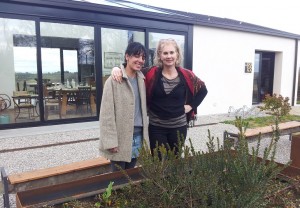
History is evident in the objects, the space, and even in the winebar’s name. Valiano once stood on the border between the Papal States and the Granduchy of Tuscany. As a border town, it had a customs house on the Via Lauretana. And thus comes the name of La Dogana, which means “customs house.” La Dogana is also the name of their refreshing and bright Rosso di Montepulciano wine.
And let’s not forget that La Dogana is Palazzo Vecchio’s winebar and that a wine tasting is in order! I try three wines: first “Dogana,” and then “Maestro,” their Vino Nobile di Montepulciano, named after the Maestro canal that runs through the Chiana valley, and which is truly noble. We conclude with their single vineyard 100% Sangiovese Nobile, “Terrarossa,” which comes from vines dating back to 1951, and which is also the name of the dirt road that leads through vineyards to the winery.
I thank Oonagh and Maria Luisa for the visit and wish them all the best for the work ahead. The 2015 season is almost here. La Dogana will be offering its guests tasty local specialties, sunsets over the Valdichiana, and a warm, relaxed environment. For further information, stop in to the wine bar on Via Lauretana Nord 75 (until the end of March they are only open on Thursdays, Fridays and Saturdays, from 5-9:30pm), call them at 0578/724170, email them at palazzovecchio@vinonobile.it or visit their website at www.vinonobile.it


